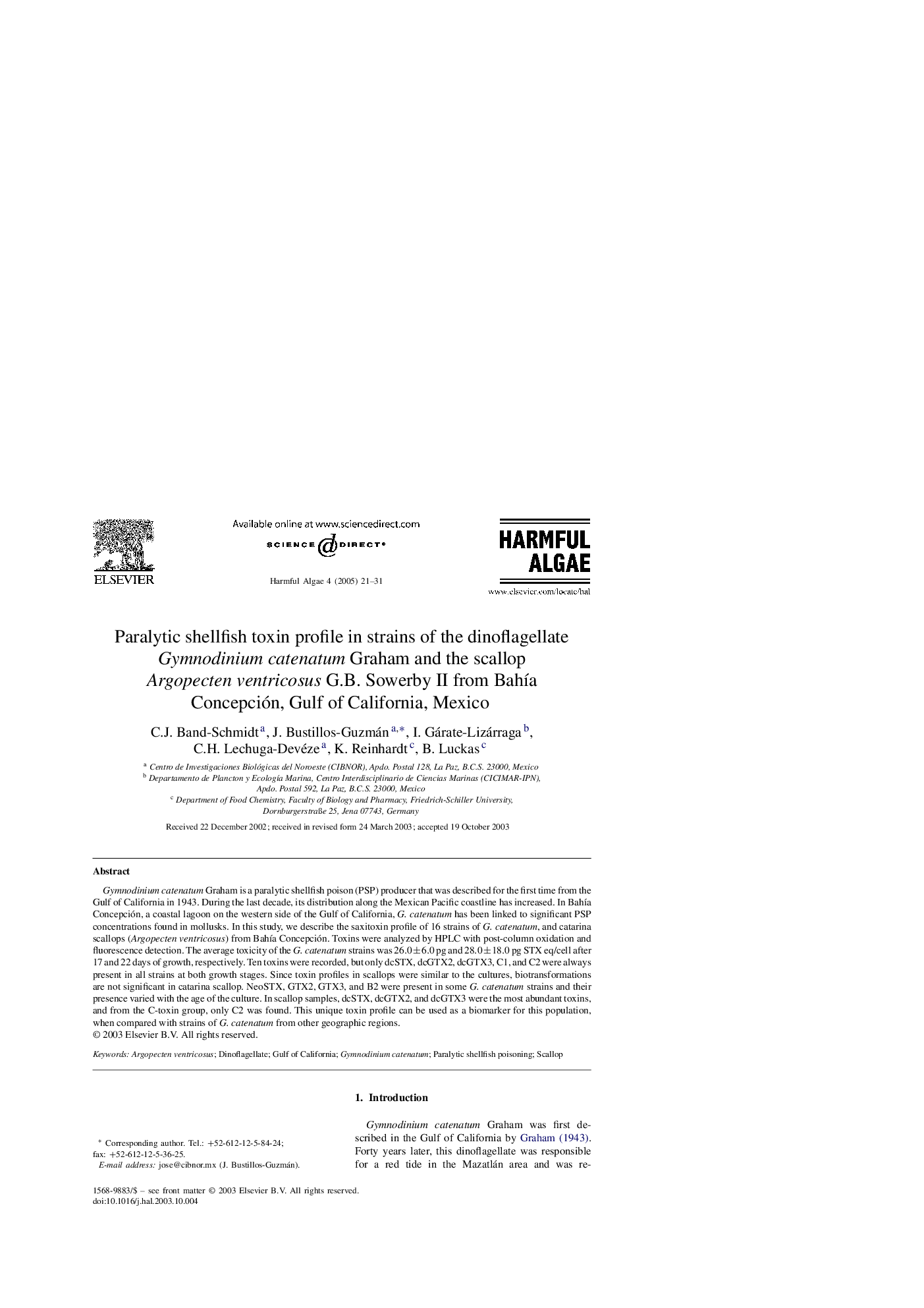| Article ID | Journal | Published Year | Pages | File Type |
|---|---|---|---|---|
| 9482733 | Harmful Algae | 2005 | 11 Pages |
Abstract
Gymnodinium catenatum Graham is a paralytic shellfish poison (PSP) producer that was described for the first time from the Gulf of California in 1943. During the last decade, its distribution along the Mexican Pacific coastline has increased. In BahıÌa Concepción, a coastal lagoon on the western side of the Gulf of California, G. catenatum has been linked to significant PSP concentrations found in mollusks. In this study, we describe the saxitoxin profile of 16 strains of G. catenatum, and catarina scallops (Argopecten ventricosus) from BahıÌa Concepción. Toxins were analyzed by HPLC with post-column oxidation and fluorescence detection. The average toxicity of the G. catenatum strains was 26.0±6.0 pg and 28.0±18.0 pg STX eq/cell after 17 and 22 days of growth, respectively. Ten toxins were recorded, but only dcSTX, dcGTX2, dcGTX3, C1, and C2 were always present in all strains at both growth stages. Since toxin profiles in scallops were similar to the cultures, biotransformations are not significant in catarina scallop. NeoSTX, GTX2, GTX3, and B2 were present in some G. catenatum strains and their presence varied with the age of the culture. In scallop samples, dcSTX, dcGTX2, and dcGTX3 were the most abundant toxins, and from the C-toxin group, only C2 was found. This unique toxin profile can be used as a biomarker for this population, when compared with strains of G. catenatum from other geographic regions.
Keywords
Related Topics
Life Sciences
Agricultural and Biological Sciences
Aquatic Science
Authors
C.J. Band-Schmidt, J. Bustillos-Guzmán, I. Gárate-Lizárraga, C.H. Lechuga-Devéze, K. Reinhardt, B. Luckas,
